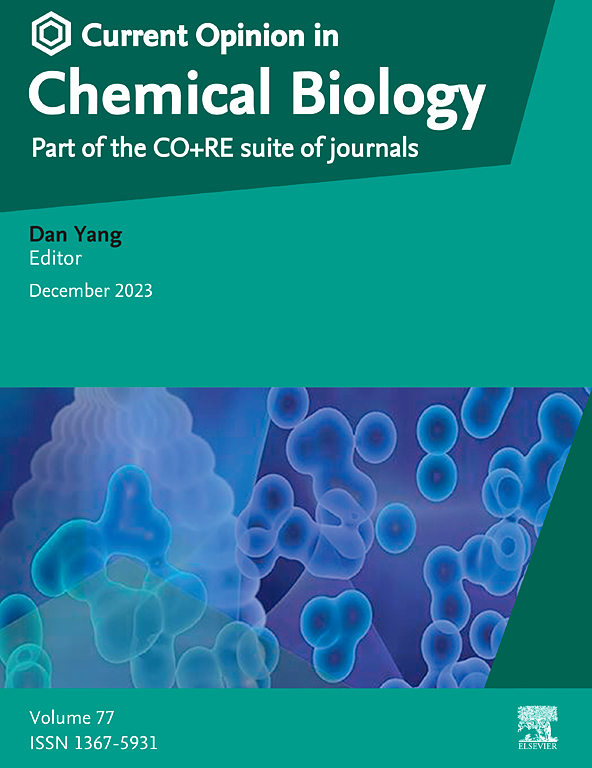化学蛋白质组学在蛋白质分析和靶向降解方面的最新进展
IF 6.1
2区 生物学
Q1 BIOCHEMISTRY & MOLECULAR BIOLOGY
引用次数: 0
摘要
化学蛋白质组学已经成为一种破译复杂生物系统中蛋白质功能、相互作用和靶向降解途径的有力方法。化学标记策略的最新进展,包括基于活性的蛋白质分析(ABPP)、接近标记(PL)和蛋白水解靶向嵌合体(PROTACs),促进了对蛋白质功能和相互作用网络的深入了解。首先,ABPP采用共价探针选择性标记活性酶,揭示功能蛋白质组学和药物-靶标相互作用。PhosID-ABPP和流线型半胱氨酸ABPP等创新技术提高了位点特异性定量和通量,使酶活性和小分子相互作用的蛋白质组范围分析成为可能。其次,PL能够利用酶或化学触发的方法表征瞬时蛋白质-蛋白质相互作用。TurboID和TransitID等进展增强了PL的时空分辨率。第三,PROTACs利用泛素-蛋白酶体系统扩大了靶向蛋白降解的范围。总的来说,我们强调了在化学蛋白质组学领域将质谱(MS)与这些方法相结合的最新进展。本文章由计算机程序翻译,如有差异,请以英文原文为准。

Recent advances in chemical proteomics for protein profiling and targeted degradation
Chemical proteomics has emerged as a powerful approach to decipher protein function, interactions, and targeted degradation pathways in complex biological systems. Recent advances in chemical labeling strategies, including activity-based protein profiling (ABPP), proximity labeling (PL), and proteolysis-targeting chimeras (PROTACs), have facilitated a deeper understanding of protein function and interaction networks. First, ABPP employs covalent probes to selectively label active enzymes, uncovering functional proteomics and drug–target interactions. Innovations such as PhosID-ABPP and streamlined cysteine ABPP have improved site-specific quantification and throughput, enabling proteome-wide analysis of enzyme activity and small-molecule interactions. Second, PL enables the characterization of transient protein–protein interactions using enzymatic or chemically triggered approaches. Advances including TurboID and TransitID enhanced the spatiotemporal resolution of PL. Third, PROTACs expand the scope of targeted protein degradation by leveraging the ubiquitin–proteasome system. Collectively, we highlight recent advancements in integrating mass spectrometry (MS) with these methodologies in the field of chemical proteomics.
求助全文
通过发布文献求助,成功后即可免费获取论文全文。
去求助
来源期刊

Current Opinion in Chemical Biology
生物-生化与分子生物学
CiteScore
13.30
自引率
1.30%
发文量
113
审稿时长
74 days
期刊介绍:
COCHBI (Current Opinion in Chemical Biology) is a systematic review journal designed to offer specialists a unique and educational platform. Its goal is to help professionals stay informed about the growing volume of information in the field of Chemical Biology through systematic reviews.
 求助内容:
求助内容: 应助结果提醒方式:
应助结果提醒方式:


